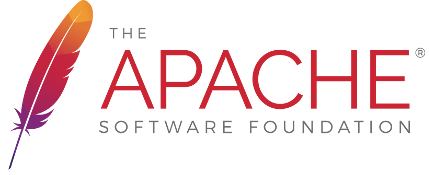How to define licenses in Apache RAT
All licenses in Apache RAT are defined in configuration files. There is a default XML based configuration file that can serve as a good example of various definitions.
It is possible to create new parsers for different configuration formats. But that task is beyond the scope of this document. In this document we will address how to define licenses in the default XML format.
The XML document has a root node named "rat-config" which comprises 4 major sections: "Families", "Licenses", "Approved" and "Matchers". There is an XSD that can be used to validate configuration files. If custom matchers have been added it will be necessary to generate a new XSD file that includes the new matchers.
Families
Families are groups that define licenses that share similarities. Each family has an id and a name. An example of an entry in this section is
<rat-config>
<families>
<family id="AL" name="Apache License Version 2.0" />
</families>
</rat-config>Matchers
Matchers define tests that check the contents of files for specific patterns. Matchers are defined in Java code and are required to have Builder classes that build them. There is additional documentation explaining how to create new Matchers. In the XML document Matchers are identified by the "matcher" element that has a single "class" property. The value of the "class" property is the fully qualified class name that identifies a Builder class. An example of a matchers entry is
<rat-config>
<matchers>
<matcher class="org.apache.rat.configuration.builders.AnyBuilder" />
<matcher class="org.apache.rat.configuration.builders.SpdxBuilder" />
<matcher class="org.apache.rat.configuration.builders.TextBuilder" />
</matchers>
</rat-config>Licenses
License elements have three properties: "family", "id", and "name". The family property must refer to the "id" of a family element. The family element can be defined in the current document or in another included document. It has to exist by the time all the configuration files are read. The "id" element is optional, if it is not provided the id will be set to the id of the associated family. However, the "id" property must be unique across all licenses. The "name" property is also optional. If not specified the name of the associated family will be used. It is recommended that each license have a unique name as name conflicts make problem determination difficult.
License elements have two child element types. The first is "notes". There may be multiple "notes" child elements. They are simple text elements that define notes about the license. The other element is a Matcher type. A matcher element is defined by a builder in the "matchers" section as described above. The matchers listed in the example above define the "any", "spdx", and "text" matcher elements.
When defining the license the matcher is required and only one may be defined. However, there are matchers that accept multiple matcher child nodes. In the example below the CDDL1 license uses the "any" matcher. The "any" matcher accepts multiple child matchers and will report a match if any of the enclosed matchers report a match. In the example below the "any" matcher has "text" and "spdx" child matchers. The "text" matcher will match the enclosed text and the "spdx" matcher matches SPDX tags. The second license defined below is the "ILLUMOS" license. It shares the same family as the CDDL1 license, has its own "id" and "name" properties. It also has a "note" child element that tells the user that it is a modified CDDL1 license. The license has a single "text" matcher.
<rat-config>
<licenses>
<license family="CDDL1">
<any>
<text>The contents of this file are subject to the terms of the
Common Development and Distribution License("CDDL") (the
"License"). You may not use this file except in compliance
with the License.</text>
<spdx name='CDDL-1.0' />
</any>
</license>
<license family="CDDL1" id="ILLUMOS" name="ILLUMOS CDDL1 Derived license">
<note>Modified CDDL1 license</note>
<text>The contents of this file are subject to the terms of
the Common Development and Distribution License (the
"License") You may not use this file except in compliance
with the License. </text>
</license>
</licenses>
</rat-config>Approved
Approved element lists the approved licenses from this configuration. It is possible to define licenses that you want to detect but not allow. If the "approved" element is not present all defined families are considered to be approved. The approved entry has "family" child entries that have "license_ref" properties that reference the "id" of the family being approved.
<rat-config>
<approved>
<family license_ref='AL' />
</approved>
</rat-config>Reading multiple configuration files.
Multiple configuration files can be read by using the --config argument. Later definitions override earlier definitions.
Listing components
All the defined components (Licenses, License Families, and Matchers) defined in the system can be displayed using the --help-licenses argument. This will produce a textual report of all the components.
License definitions and license family definitions can be added to the XML output by using the --output-licenses and --output-families options. These options output directly to the XML and are ignored by the standard XSLT reports. To see the output either a custom XSLT will need to be created or use the --output-style xml option.
 Apache RAT
Apache RAT Maven
Maven